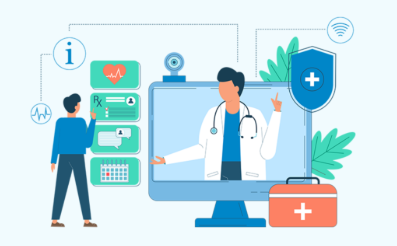The Rise of Continuous Monitoring and Its Role in Chronic Disease Tracking

Chronic disease doesn’t stop between doctor’s visits. For individuals managing conditions like diabetes, hypertension, or sleep disorders, what happens day to day is just as important as what happens in the clinic. Joe Kiani, Masimo and Willow Laboratories founder, is advancing this vision through platforms like Nutu™, which bring continuous monitoring into real-world settings. His focus goes beyond collecting data, but it’s about equipping users with the insight and support they need to respond with confidence.
Rooted in this approach, continuous monitoring has become a cornerstone of modern healthcare. By tracking key health metrics in real time, it creates a fuller, more dynamic view of a person’s condition, helping to uncover patterns, detect risk signals early, and guide timely, personalized interventions that static snapshots often miss.
From Intermittent Checks to Ongoing Insight
Traditional care models rely on periodic measurements, quarterly labs, annual physicals, or occasional checkups. While important, these intervals often miss trends that happen slowly or shift day by day. For example, a patient’s glucose might be stable during a lab draw but unstable every morning. A blood pressure spike may go unnoticed until symptoms arise. Continuous monitoring changes the way users and providers approach care. With wearable sensors and app-based platforms, users now track glucose, heart rate variability, sleep, movement and more without having to pause or reflect on every reading.
Platforms like Nutu take those data points and translate them into insights that users can act on right away. These insights are often presented through dashboards, alerts, or personalized recommendations tailored to the user’s goals. As a result, decision-making becomes faster, more accurate, and deeply informed by real-time analytics.
Helping People Connect Patterns
The real benefit of continuous tracking isn’t just having more data. It’s about making connections. If sleep is poor, blood sugar might run high the next day. If stress rises, heart rate and cravings may follow. It uses continuous input to surface those patterns.
For example, the platform might notice that glucose spikes after meals eaten too late or that the heart rate stays elevated after poor sleep. It then offers small suggestions that reflect those insights, such as eating earlier, taking a short walk, hydrating more, or getting to bed 30 minutes sooner. This approach helps users understand their body, not just monitor it.
Read Also: Learn All About How to Become Ultrasound Technician
Shifting From Reaction to Reducing the Risk
Chronic disease often follows a cycle of symptoms, reactions, and adjustments. But with continuous monitoring, users can see early signs and respond before symptoms worsen. Instead of waiting for a crisis, they can adjust their behavior while still in control.
If Nutu sees rising glucose trends, it may recommend a snack swap or a walk before dinner. If the heart rate is high during rest, it may prompt a stress-reducing activity. These nudges aren’t disruptive. They’re timely and small, designed to help users avoid bigger problems later. This shift in timing makes care more proactive and personal.
Enhancing Conversations with Providers
Continuous monitoring helps users and strengthens provider support. Clinicians often rely on reports based on memory or outdated logs, but continuous data offers a real-world snapshot of what is happening. When users come to appointments with trend reports from platforms, the conversation shifts from “How have you been?” to “Let’s talk about this specific pattern.” Providers gain clarity. Patients feel heard. Plans become more tailored and realistic. The result is more efficient care and better engagement.
Supporting More Than Just Metrics
One of the benefits of continuous monitoring is that it supports holistic care. Metrics don’t exist in isolation. Sleep influences glucose, and heart rate is tied to movement and mood. Weight changes reflect more than just meals.
Platforms that integrate continuous inputs across systems offer more complete insight. For example, don’t just look at one metric. It compares data across sleep, glucose, recovery, and movement to recommend small changes that match the user’s life, not just their diagnosis. This multi-layered insight improves long-term outcomes because it supports the whole person.
Building Daily Habits with Real-Time Feedback
The power of continuous monitoring isn’t just in the device, but in the feedback loop. Users benefit most when data leads to action. When something changes, such as glucose spikes, sleep dips, or steps drop, the device can respond. It might prompt a hydration reminder, a bedtime suggestion, or a meal adjustment. These real-time prompts turn information into behavior. They help reinforce healthy habits while also offering solutions when things drift. Over time, users build awareness and confidence. They don’t need to be perfect, but to stay engaged.
Joe Kiani, Masimo founder, notes, “What’s unique about Nutu is that it’s meant to create small changes that will lead to sustainable, lifelong positive results. I’ve seen so many people start on medication, start on fad diets… and people generally don’t stick with those because it’s not their habits.” That mindset drives its use of continuous monitoring, not for perfection but for practical progress. Each suggestion is small but purposeful, helping users adapt and move forward without burnout. It’s not about seeing everything, but seeing what matters.
Reaching Users Where They Are
Continuous monitoring helps close gaps in access to care. While not every user can regularly visit a specialist, many can still receive timely, tailored guidance through a wearable device and smartphone. These tools bring support into the environments where people live, work, and make decisions, not just clinical spaces.
Platforms like Nutu are built to adapt. They respond to individual schedules, goals, and geographic realities, offering the same level of insight to someone in a remote area as to someone near a medical center. Whether a user is newly diagnosed or managing a condition for years, the feedback reflects their current needs and capacity, not a generic script. This adaptability is what makes continuous care not only scalable but genuinely inclusive.
Redefining Care Beyond the Clinic
As health care continues to shift toward at-home support, continuous monitoring becomes a core strategy for long-term condition management. It offers clarity without requiring users to do more. It supports change without pressure. And it builds trust by helping people understand themselves better. When paired with meaningful feedback, wearables and continuous data streams do more than inform, but support change.
Nutu reflects this shift, using continuous data not to complicate care, but to simplify it. It helps users act, one step at a time, turning insight into daily progress and transforming chronic care from episodic to empowering.




